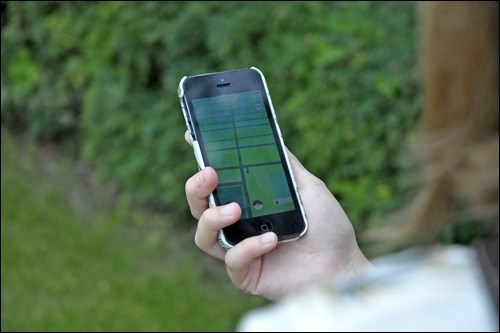Everyone remembers 1969 for the summer Neil Armstrong landed on the moon and Jimi Hendrix played The Star-Spangled Banner on electric guitar at Woodstock. 2016’s hallmark is Donald Trump securing the Republican nomination for president and people catching Pokémon on their phones. While the phrase “President Trump” may rouse disquiet in many people, Pokémon Go will likely be remembered more fondly.
Since Pokémon Go’s Canadian release on Android and iOS devices on July 17, The Battlefords’ ordinarily sparsely populated public parks and sidewalks are full of players diligently attempting to catch them all. Within its first week of the launch on July 6, Pokémon Go became the most downloaded app of all time in the App Store and, on Aug. 1, hit 100 million downloads.
The game works by tracking players’ GPS location, which positions their game avatars on a map of their area. Players then walk (or drive) to designated "PokéStops" (to collect free items) and "gyms" (to fight and train captured Pokémon) located on the map which correspond in the real world to buildings like libraries and churches and public areas like parks and monuments.
Some users unfamiliar with the Pokémon universe might be drawn to give it a try because of the novelty of real world location-based play, but for many young adults, Pokémon Go is a chance to reconnect with the franchise. First launched as a pair of games for Nintendo’s Game Boy in 1996, the Pokémon brand has continued to evolve thanks to the release of spinoffs, including follow up video games, a television series, movies, soundtracks and collectable cards.
Local player Tyler McKay, who has been a fan since the very first Game Boy games, heard from friends about Go and downloaded the app the first day it hit the online stores. His experience so far has been positive and, he says, he would recommend playing to anyone, even those who weren’t familiar with it previously, because it created an opportunity to get active.
“You don’t even realize in a given day you’re walking five kilometres because it adds a challenge and a reward,” McKay says. “Since I’ve started playing I’ve walked 40 or 50 kilometres. The app tells you based on your GPS co-ordinates how far you’ve walked.”
The location-based design of the game also lends itself to meeting other players because everyone’s map has the same PokéStop and gym locations.
“You see people walking around following their own map. You can meet quite a few new people,” McKay says. “At gyms especially you can see who else is playing the game and you get to know them and see what team they’re on.”
Though less common, PokéStops and gyms can also correspond to private buildings, as in the case of Freedom Skate & Snows’ wall of graffiti art. Brennan Lampitt, the manager at Freedom, says they were excited to be part of the game, but their ever-full parking lot hasn’t led to more traffic inside the store. Lampitt isn’t complaining though.
“I don’t want to discriminate against anyone,” he says with a laugh, “if you’re into [Pokémon], that’s cool.”
He adds that they are even in the process of having t-shirts made with a screenshot taken from the game of the graffiti wall that they will hang in the window to hopefully attract players beyond just the parking lot.
So far, players have been respectful in instances where private property and, to a larger extent, public spaces are included as points on the game’s map.
While Go players in the United States have been the subjects of unfortunate international headlines with players wandering upon dead bodies, being mugged at PokéStop locations, falling off a cliff or having their car shot at for trespassing, so far, even with the added hazards, players haven’t been deterred. In the Battlefords, Sgt. Neil Tremblay of the RCMP says, there haven’t been any Pokémon related incidents.




